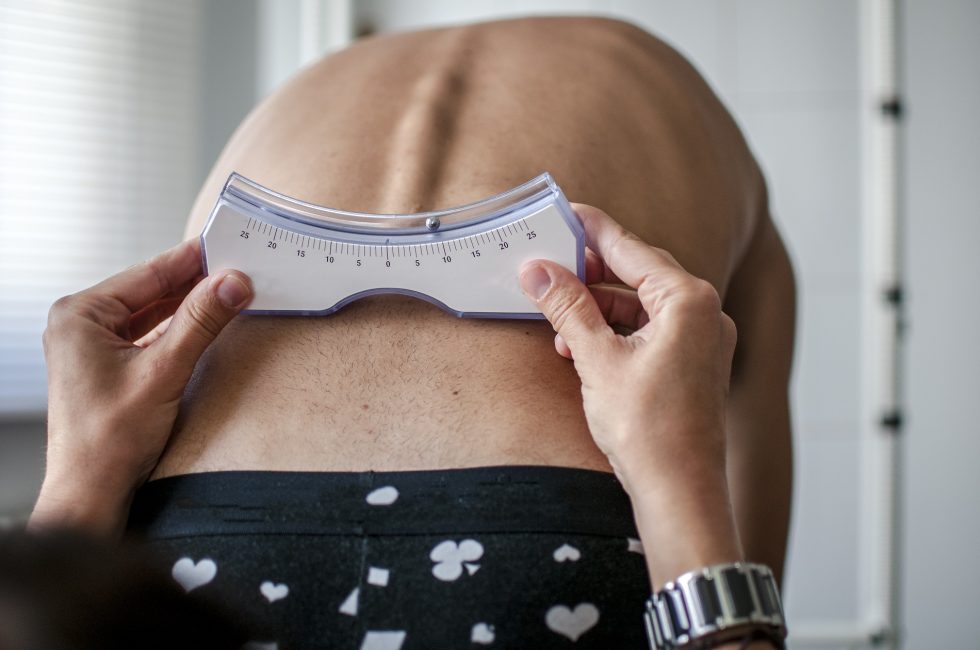

At the final evaluation, 69% of the patients had improved coronal balance, and at a mean follow-up of 33☒3.3 months, 39 patients (86.7%) were either satisfied or very satisfied with the overall outcome. Additional surgery was indicated in 12 patients (26.7%), including 7 rib-hump resections. No permanent neurologic deficits or deaths occurred. Concerning surgical outcomes, 13 patients (28.9%) experienced minor and 15 (33.3%) experienced major complications. In rigid curves, the Cobb angle difference between the first and final radiographs during HGT was only 8°☙° for scoliosis and 7°☑2° for kyphosis. The mean flexibility of the scoliosis curve during HGT was only 14.8☑1.4%, which was not significantly different from the flexibility measures achieved on bending radiographs or Cotrel traction radiographs. The preoperative FVC% was highly predictive of the follow-up FVC% and the response during HGT. The mean preoperative FVC% in these patients was 47.2☑8%, and the FVC% at follow-up was 44.5☑7% (a difference that did not reach statistical significance). Concerning the evolution of pulmonary function, 30 patients had complete data sets, with the final PFT performed, on average, 24 months after the index surgery. The difference between the first and the final PFTs during the HGT averaged 7.0☘.2% (p<.001). Preoperative PFT data were obtained for all the patients, and 24 patients had ≥3 assessments during the HGT. In 18 patients (40%), a posterior concave thoracoplasty was performed. The instrumentation used included hybrids and pedicle screw-based constructs. The mean preoperative scoliosis was 106.1°☓4.5°, and the mean kyphosis was 90.7°☒9.7°. HGT was used preoperatively in all the patients. The curve apices were mainly in the thoracic spine.

The mean apical rotation was 3.6°☑.4°, according to the Nash and Moe grading system.

39 patients had rigid kyphoscoliosis, and 6 had scoliosis. The mean age of the sample was 24☑4 years. PFTs were used to assess the predicted forced vital capacity (FVC%). The analysis focused on the impact of HGT on curve flexibility, pulmonary function tests (PFTs), complications and surgical outcomes in a single spine centre. To investigate the use of HGT in severe deformities, we performed a retrospective review of 45 patients who had severe and rigid scoliosis or kyphoscoliosis. However, little is known with respect to the ideal indications for HGT, its appropriate duration, or its efficacy in the treatment of rigid deformities. Presurgical halo-gravity traction (HGT) achieves an increase in curve flexibility, a reduction in neurologic risks through gradual traction on a chronically tethered cord and an improvement in preoperative pulmonary function. The treatment of rigid and severe scoliosis and kyphoscoliosis is a surgical challenge.


 0 kommentar(er)
0 kommentar(er)
